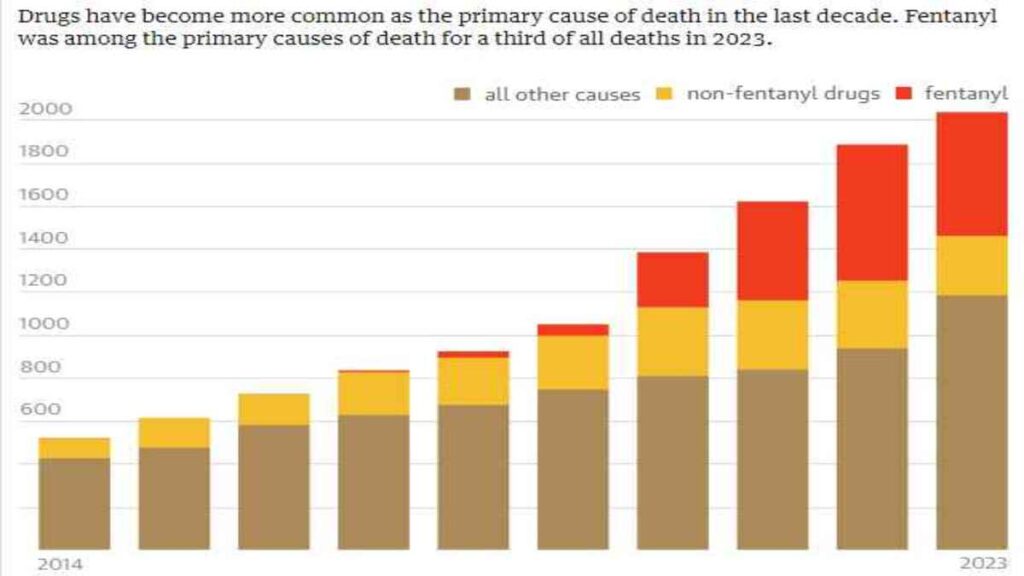
Los Angeles, one of the most populous counties in the United States, grapples with a devastating reality: the death toll among its unhoused population reached alarming heights in 2023, with more than 2,000 individuals losing their lives.
These tragic deaths, averaging nearly six per day, underscore the severity of the humanitarian crisis unfolding on the streets and in shelters across the county. A comprehensive analysis of Los Angeles County medical examiner data, exclusively reviewed by the Guardian, paints a grim picture of the escalating emergency.
Over the past decade, a total of 11,573 deaths of unhoused individuals have been logged, with fatalities steadily climbing each year. In 2023 alone, 2,033 lives were lost—an astonishing 291% increase from 2014 and an 8% uptick from the previous year.
The data, however, likely underestimates the true scope of the crisis, as it only captures deaths falling under the medical examiner’s jurisdiction, excluding cases where individuals recently saw a doctor.
ALSO READ: Illinois City Threatens to Fine Church $750 Daily for Providing Shelter to Homeless People
The LA County public health department, employing more comprehensive methodologies, estimates a 20% increase in deaths recorded in its database, further underscoring the magnitude of the crisis. Behind these stark statistics lie stories of profound human suffering and struggle.
The autopsy reports from 2023 highlight the myriad challenges facing unhoused individuals: the proliferation of fentanyl, untreated physical and mental illnesses, and the absence of affordable housing. Tragically, many deaths are attributed to overdoses, violence, and untreated medical conditions, reflecting the harsh realities of life on the streets.
POLL — Should the Government Increase Taxes on the Wealthy To Reduce Economic Inequality?
The crisis is exacerbated by the staggering number of people experiencing homelessness in Los Angeles County, which now exceeds 75,500 individuals. With limited access to stable housing, tens of thousands live in tents, vehicles, and makeshift structures, exposing them to more significant risks and vulnerabilities.
The data also reveals troubling disparities, with Black and Latino Angelenos disproportionately represented among the deceased. Moreover, the prevalence of fentanyl-related deaths has surged in recent years, highlighting the deadly impact of the opioid epidemic on the unhoused population.
Amidst the tragedy, stories of resilience and community solidarity emerge. Individuals like Rebecca Chavez mourn the loss of loved ones and grapple with the harsh realities of life on the streets.
ALSO READ: These American States Have the Most Homeless People in 2024
Across neighborhoods like Van Nuys, unhoused residents mourn the passing of community members like Anjileen Swan, whose struggles with homelessness and health issues epitomize the systemic failures driving the crisis.
As Los Angeles confronts this escalating humanitarian emergency, advocates and community organizers call for urgent action to address the root causes of homelessness and provide support and resources to those in need. With lives at stake and futures hanging in the balance, the need for comprehensive and compassionate solutions has never been more pressing.
You Might Also Like:
Authorities Discover Bodies of Tennessee Deputy, Woman he Arrested in River
Police Questions Man in Case of Texas Girl Who Vanished on Her Way to School
Kansas City Mayor Accuses State Governor of Racism for Calling Super Bowl Parade Shooters “Thugs”
Grandma Claims 7-Year-Old Shot at Lakewood Church Is Fighting for His Life
